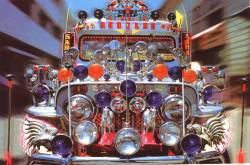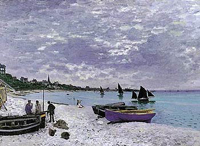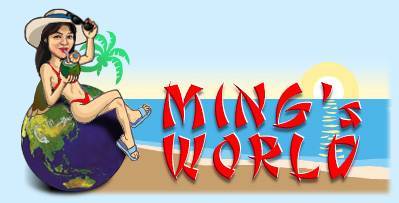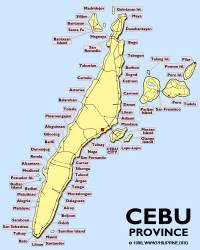|
Often called the "Queen
City of the South" and the seat of Christianity in the Philippines,
Cebu is the country's oldest city. Exploring Cebu City, one encounters
a rich historic past. Cebuanos are extremely proud of their
cultural and historical heritage, a legacy which has endured thru
the centuries from the time the great explorer Ferdinand Magellan
first planted the cross on Cebu's shore.

Magellan's Cross
Time
has been kind to Cebu. From Zubu, the fishing village and busy trading
port in 1521 has evolved a highly urbanized metropolitan center
which now serves as focal point of growth and development in Southern
Philippines. With its five cities; Cebu, Danao, Lapulapu, Mandaue
and Toledo; and its 48 smaller towns, Cebu has more than kept pace
with the nation's progress. Today, the island province leads in
traditional and non-traditional exports and has the highest economic
growth rate anywhere in the country. Likewise, recent indications
pointed out that Cebu has become the country's most favorite tourist
destination.
In contrast to the bustling metropolis, the rest of Cebu's 167 islets
and islands are lined with idyllic white sandy beaches and
pristine clear waters.
Cebu has gained wide popularity for it's fantastic diving
grounds evidenced by the proliferation of resorts which offer luxurious
accommodations, excellent dive facilities and the services of competent
dive masters and dive guides.
Cebu's strategic location makes it ideal for those who wish to travel
to the other islands and provinces. By plane, boat or bus, nowhere
could be too far from CEBU.

top
QUICK
FACTS:
Population/language:
Cebu Province has a total population of around 3 million.
Cebuano is the native tongue. English and Tagalog are commonly understood
and spoken.
Weather:
Cebu is best from December to May when the weather turns dry. It
is coolest from December to February, hottest from March to May.
Temperature can rise higher than 100 F in the summer. The rainy
season begins in July bringing torrential downpours that would sometimes
inhibit movement.
Philippine Time
Philippine standard time is eight hours ahead of Greenwich Meantime.
Dress /What to bring:
Wear natural fiber, lightweight clothing. You'll feel more comfortable.
Bring shorts, hat, sunglasses, bathing suit, insect repellent, flashlight,
sun block cream, tough shoes for walking, rubber slippers for the
beach. Pack tissue paper in your purse as public toilets almost
never have any.
The Barong Tagalog is acceptable formal wear for men. Shorts or
sleeveless shirts should never be worn when visiting churches, mosques
or temples.
Electrical Appliances:
Most areas in Cebu are supplied with 220 volts, 60 cycles. A plug
with 2 flat parallel prongs is the norm.
Money:
The Philippine currency is peso, divided into 100 centavos. Next
to the peso, the US dollar enjoys wide acceptance. Most foreign
currencies can easily be changed at banks, hotels, and authorized
dealers. Foreign currency is not readily taken by the establishments
in Cebu. Major foreign credit cards may be accepted only at major
hotels, resorts, shops, and restaurants. Visitors are advised to
bring sufficient amount of change in small bills or coins.Travellers
Cheques are highly recommended.
Business Hours:
Banks - 9am to 3pm, Monday to Friday; government agencies and offices
- 8am to 5pm, Monday to Friday; private firms - 9am to 6pm, Monday
to Friday, 9am to 12noon Saturday; Shops-9am to 7pm, Monday to Saturday.
Most department stores stay open on Sunday and holidays.
Tipping:
Bellhops expect a tip, as do waiters, taxi drivers, hairdressers,
beauticians, porters and tour guides..
Public Transport:
Getting around Cebu, one may take a colorful jeepney or a
bus at a minimal fare. Tricycles (motorcycles with sidecars) are
popular in outlaying areas and in the suburbs, quiet notably within
mactan island. Taxicabs are widely available.

the Philippine
Jeepney - this
is a popular mode of transportation amongst the locals. it used
to be a remnant from the military jeeps from the second world war
II. Now, it is a classic philippine folkart piece.
top
How to
Get Around the Island:
Getting Around by Land
Jeepney
rub elbows with the locals on the
(fixed route)
famous Filipino commuter vehicle;
for city trips.

tartanilla (horse-drawn cart)- clippety-clop,clippety-clop...
get a
feel of how Cebuanos got around in times past. it is not a popular
means of transportation these days, but still popular for special
occassions like weddings.
taxi (with meter)- ideal for really going around and
seeing the sights, .
the local drivers are usually honest and some form of government
control is also imposed especially from the airports.
Getting Around by Sea
banca - (motorized outrigger) for island-hopping

SOME DO'S AND DONT'S
IN PHILIPPINE SOCIETY
The most important initial step in efforts of gaining insights
about the local resident is to understand him in his own setting.
The following are just some general statements intended to help
you in your behavior in the local community:
*Avoid wearing sandals when attending special occasions in the local
community - wearing shoes is a sign that the event is important
to you.
* Do invite people at least 3 times. Local residents are taught
that it is proper to refuse the first time or two. To them, insistence
is a clear sign that the offer or invitations is genuine.
*Do give the local residents a way out of the situation so he can
save face, thus avoiding embarrassment. Embarrassing him will cause
"hiya" or loss of face.
*Don't use the common sign of OK - In the local community. It means
money. You may use the new sign OK. This is the thumbs-up sign which
has been commonly seen on television.
*Don't use your forefinger upward to call a local resident-It is
considered somewhat degrading. One way of calling is to beckon with
the hand in gentle downward motion. Psst...
is another popular way to get someone's
attention. As a rule however, it is preferred to call the person
by name. it is even better to use nicknames, because these
are reserved for close friends.
*Smiling is a form of friendship and a form of greeting.
*Do show respect for age- use the proper appellations for elders
and relations. Find out right away what appellations are used in
the family.
Try Cebuano...... It's
Fun
| good morning |
maayong buntag |
| good afternoon |
maayong hapon |
| good evening |
maayong gabi-i |
| how are you? |
kumusta ka? |
| goodbye |
ari na ko / adiyos |
| i'm fine |
maayo man |
| yes / no |
oo / dili |
| how much is this? |
tag-pila ni? |
| expensive |
mahal |
| cheap |
barato |
| I / we |
ako / kita |
| you |
ikaw |
| he , she / they |
siya / sila |
| where are you going? |
asa ka paingon ? |
| who ? |
kinsa? |
| what ? |
unsa ? |
| why ? |
ngano ? |
| beautiful / ugly |
gwapa / ngil-ad |
| near / far |
duol / layo |
| fast / slow |
kusog / hinay |
| open / close |
abri / sarado |
| help me |
tabangi ko |
| stop |
hunong |
| right / left |
tu-o / wa |
| please sit down |
palihug lingkod |
| come here |
dali ra |
| thank you |
daghang salamat |
| you are welcome |
wa'y sapayan |
| what is your name ? |
kinsa imong nga'n? |
| my name is .. |
ang akong pangan .. |
top
HOW TO GET TO CEBU ?
There are 2 ways to go to
Cebu. The first, and the easiest, is by direct flight. At present
five international airlines offer direct flights to Cebu from
abroad:
* Via
Singapore. Singapore Airlines offers three direct flights
per week to and from Cebu : Tuesday, Friday, and Sunday. The flights
are flown with a B 737 by Silkair, a daughter company from Singapore
Airlines.
* Via
Hong Kong. Cathay Pacific offers three flights per week to and
from Cebu: Sunday, Tuesday, and Thursday. The flights are flown
with a Lockheed Tristar or an Airbus 340.
Also, Philippine Airlines offers direct flights
Cebu-Hong Kong- Cebu. The flights are every Monday, Wednesday and
Saturday with an Airbus.
* Via Kuala Lumpur. Malaysia Airlines offers twice weekly
a flight to
Kuala Lumpur, via Kota Kinabalu. The flights are flown on Thursday
and Sunday with a B 737.
* Via Narita, Japan. Philippine Airlines flies every Wednesday,
Thursday and Sunday direct Cebu-Narita and back. The flights are
carried out with an Airbus.
* Via Osaka, Japan. Philippine Airlines flies every Saturday
and Sunday direct Cebu-Osaka and back. The flights are carried out
with an Airbus.
Philippine Airlines also offers daily it's
"Cebu Express" program, linking Cebu directly with 14 international
destinations.
The alternative of a direct flight is to fly to Manila and take
a domestic flight to Cebu, or take a boat. There are three airlines
which fly Manila-Cebu and back. Flights are carried out with Airbuses
and B 737's. The flight takes one hour.
The boat trip takes about 20 hours, but sailing on a luxury liner
through the Philippine Archipelago is an adventure in itself. Until
a few years ago, such trips were not advisable. But the major shipping
lines have changed their perception of inter-island shipping.
All Ships offer a wide range of accommodations.
There are special two person suites and staterooms, but also there
are much cheaper first and economy class cabins. Food is often included
in the ticket, all ships have restaurants, coffeeshops and/or bars
and discos. Sailing on time, clean, organized and equipped with
restaurants and entertainment made the passenger easily forget the
20 hours.
The flight and ship schedules always vary from season to seasons
so it is advisable always to consult the airlines or the shipping
company for the exact details of the departures and arrivals.
bon voyage! :)
top

home . about
cebu . places of interest . diving . e-mail

Ming's World© All Rights Reserved. 1999-2002
updated: 10.17.2002
|








